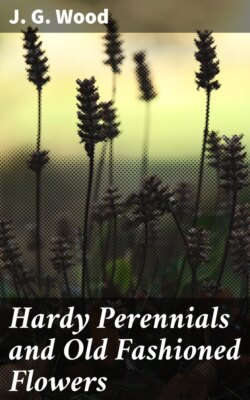Читать книгу Hardy Perennials and Old Fashioned Flowers - J. G. Wood - Страница 19
На сайте Литреса книга снята с продажи.
Anemone Coronaria.
ОглавлениеTable of Contents
Poppy-like Windflower; Nat. Ord. Ranunculaceæ.
Hardy and tuberous. The illustration (Fig. 6) is of the double form, in which it may frequently be seen; also in many colours, as blue, purple, white, scarlet, and striped; the same colours may be found in the single and semi-double forms. There are many shades or half colours, which are anything but pleasing, and where such have established themselves, either as seedlings or otherwise, they should be weeded out, as there are numerous distinct hues, which may just as easily be cultivated. The great variety in colour and form of this Anemone is perhaps its most peculiar characteristic; for nearly 300 years it has had a place in English gardens, and came originally from the Levant. Its habit is neat; seldom does it reach a foot in height, the flowers being produced terminally; they are poppy-like, and 2in. to 3in. across, having six sepals. The leaves are ternate, segments numerous; each leaf springs from the tuber, with the exception of those of the involucre.
In planting this species, it should be kept in mind that it neither likes too much sunshine nor a light soil; under such conditions it may exist, but it will not thrive and scarcely ever flower. When the tuberous roots have become devoid of foliage they may be lifted, and if they have grown to a size exceeding 3in. long and 1in. in diameter, they may be broken in halves with advantage; the sooner they are put back into the ground the better; slight shade from the mid-day sun and good loam will be found to suit them best. When the various colours are kept separate, bold clumps of a score or so of each are very effective; mixed beds are gay, almost gaudy; but the grouping plan is so much better, that, during the blooming period, it is worth the trouble to mark the different colours, with a view to sorting them at the proper time.
Fig. 6. Anemone Coronaria Flore-pleno. (One-third natural size.)
The nutty roots are often eaten by earth vermin, especially wireworm. Whenever there is occasion to lift the roots it is a good plan to dress them, by repeated dips in a mixture of clay and soot, until they are well coated; they should be allowed to dry for a short time between each dip; this will not only be found useful in keeping off wireworm and similar pests, but will otherwise benefit the plants as a manure.
Flowering period, May and June.
